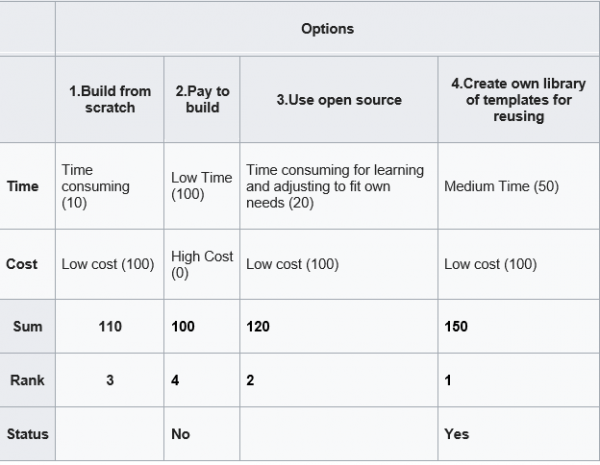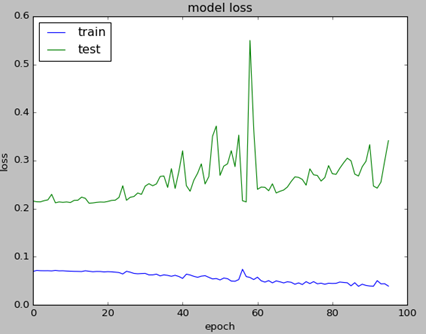In this post we will learn how to use sentiment analysis with API python from paralleldots.com. We will look at running this API from python environment on laptop and also in web application environment with python Django on pythonanywhere hosting site.
In the one of previous post we set python Django project for chatbot. Here we will add file to this environment. Setting the chatbot files from previous project is not necessary. We just need folder structure.
Thus in this post we will reuse and extend some python Django knowledge that we got in the previous post. We will learn how to pass parameters from user form to server and back to user form, how to serve images, how to have logic block in web template.

ParrallelDots [1] provides several machine learning APIs such as named entity recognition (NER), intent identification, text classification and sentiment analysis. In this post we will explore sentiment analysis API and how it can be deployed on web server with Diango python.
Running Text Analysis API Locally
First we need install the library:
pip install paralleldots
We need also obtain key. It is free and no credit card required.
Now we run code as below
import paralleldots
paralleldots.set_api_key("XXXXXXXXXXX")
# for single sentence
text="the day is very nice"
lang_code="en"
response=paralleldots.sentiment(text,lang_code)
print(response)
print (response['sentiment'])
print (response['code'])
print (response['probabilities']['positive'])
print (response['probabilities']['negative'])
print (response['probabilities']['neutral'])
# for multiple sentence as array
text=["the day is very nice,the day is very good,this is the best day"]
response=paralleldots.batch_sentiment(text)
print(response)
Output:
{'probabilities': {'negative': 0.001, 'neutral': 0.002, 'positive': 0.997}, 'sentiment': 'positive', 'code': 200}
positive
200
0.997
0.001
0.002
{'sentiment': [{'negative': 0.0, 'neutral': 0.001, 'positive': 0.999}], 'code': 200}
This is very simple. Now we will deploy on web hosting site with python Django.
Deploying API on Web Hosting Site
Here we will build web form. Using this web form user can enter some text which will be passed to semantic analysis API. The result of analysis will be passed back to user and image will be shown based on result of sentiment analysis.
First we need install paralleldots library. To install the paralleldots module for Python 3.6, we’d run this in a Bash console (not in a Python one): [2]
pip3.6 install –user paralleldots
Note it is two dashes before user.
Now create or update the following files:
views.py
In this file we are getting user input from web form and sending it to API. Based on sentiment output from API we select image filename.
from django.shortcuts import render
import paralleldots
def do_sentiment_analysis(request):
user_sent=""
user_input=""
fname="na"
if request.POST:
user_input=request.POST.get('user_input', '')
lang_code="en"
paralleldots.set_api_key("XXXXXXXXX")
user_response=paralleldots.sentiment(user_input,lang_code)
user_sent=user_response['sentiment']
if (user_sent == 'neutral'):
fname= "emoticon-1634586_640.png"
elif (user_sent == 'negative'):
fname = "emoticon-1634515_640.png"
elif (user_sent == 'positive'):
fname = "smiley-163510_640.jpg"
else:
fname="na"
return render(request, 'my_template_img.html', {'resp': user_sent, 'fname':fname, 'user_input':user_input})
my_template_img.html
Create new file my_template_img.html This file will have web input form for user to enter some text. We have also if statement here because we do not want display image when the form is just opened and no submission is done.
<html>
<form method="post">
{% csrf_token %}
<textarea rows=10 cols=50 name="user_input">{{user_input}}</textarea>
<br>
<label>{{resp}}</label>
<br>
<button type="submit">Submit</button>
{% if "_640" in fname %}
<img src="/media/{{fname}}" width="140px" height="100px">
{% endif %}
</form>
</html>
Media folder
In the media folder download images to represent negative, neutral and positive. We can find images on pixabay site.
So the folder can look like this. Note if we use different file names we will need adjust the code.
emoticon-1634515_640.png emoticon-1634586_640.png smiley-163510_640.jpg
urls.py
This file is located under /home/username/projectname/projectname. Add import line to this file and also include pattern for do_sentiment_analysis:
from views import do_sentiment_analysis urlpatterns = [ url(r'^press_my_buttons/$', press_my_buttons), url(r'^do_sentiment_analysis/$', do_sentiment_analysis), ]
settings.py
This file is also located under /home/username/projectname/projectname
Make sure it has the following
STATIC_URL = '/static/' MEDIA_ROOT = u'/home/username/projectname/media' MEDIA_URL = '/media/' STATIC_ROOT = u'/home/username/projectname/static' STATIC_URL = '/static/'
Now when all is set, just access link. In case we use pythonanywhere it will be: http://username.pythonanywhere.com/do_sentiment_analysis/
Enter some text into text box and click Submit. We will see the output of API for sentiment analysis result and image based on this sentiment. Below are some screenshots.

Conclusion
We integrated machine learning sentiment analysis API from parallelDots into our python Diango web environment. We built web user input form that can send data to this API and receive output from API to show it to user. While building this we learned some Django things:
how to pass parameters from user form to server and back to user form,
how to serve images,
how to have logic block in web template.
We can build now different web applications that would use API service from ParallelDots. And we are able now integrate emotion analysis from text into our website.
References
ParallelDots
Installing New Modules
Handling Media Files in Django
Django Book
How to Create a Chatbot with ChatBot Open Source and Deploy It on the Web – Here we set project folder that we use in this post













You must be logged in to post a comment.